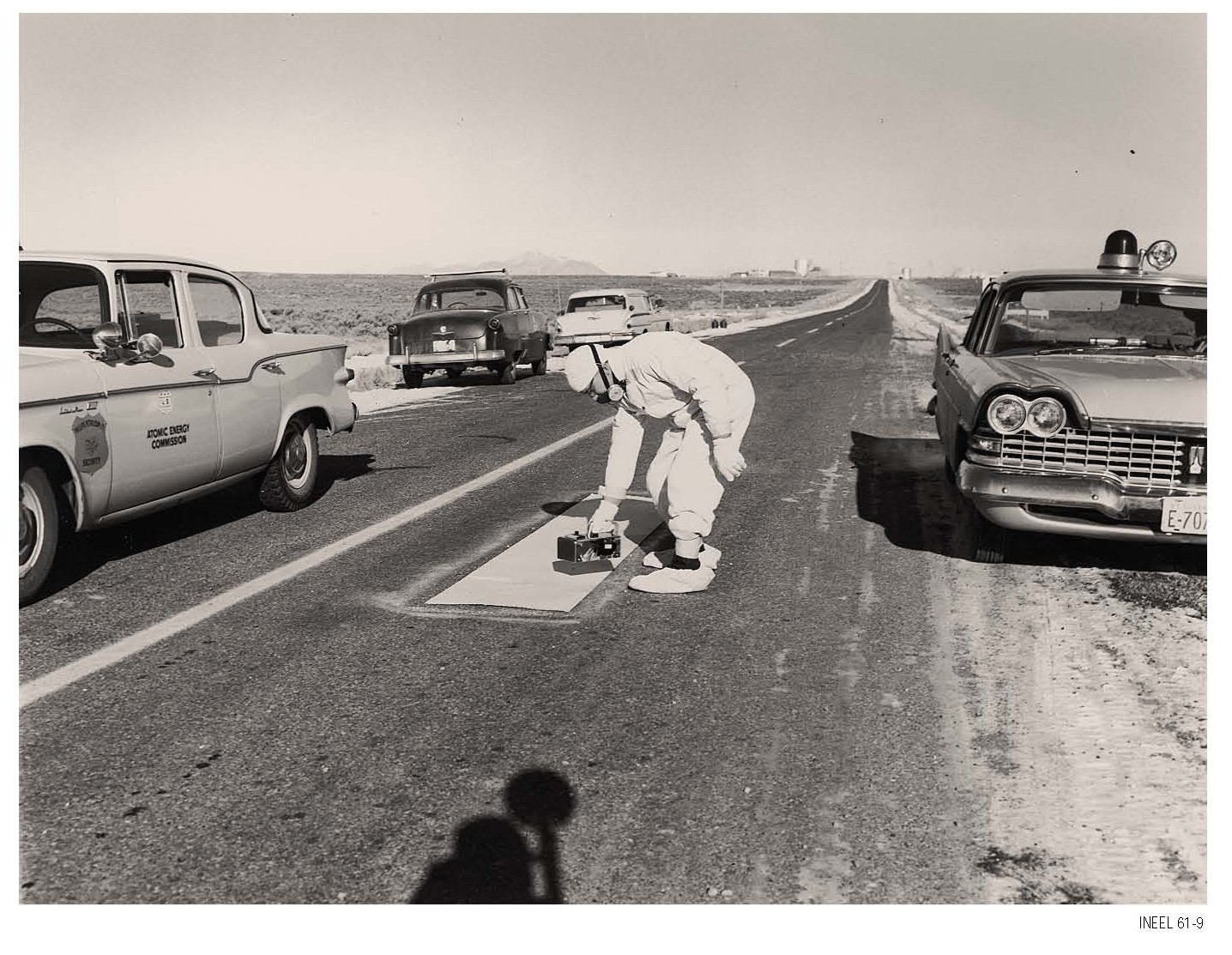The first reactor to produce electricity was the Experimental Breeder Reactor 1 (EBT-1) near Arco, Idaho. Built in 1951 its primary purpose was to demonstrate the nuclear fission could be used to convert uranium to plutonium - hence "breeding" on element from another.
In December of 1951 the reactor was used to power four 200W light bulbs - the first example of nuclear power generation in the world.
This reactor site is now a historic landmark in the USA.
The EBR-1 was also the site of the development of atomic jet engines. In the 1950's the Air Force experimented with jet engines that would be powered by nuclear reactors. This was the era of strategic bombers and the ever impending potential nuclear conflict with the Soviet Union. The US Air Force kept strategic bombers aloft at all times so that in case of an attack the planes could fly directly to targets in the Soviet Union.
Keeping the airplanes aloft was complex operation because of the logistics of keeping the planes fueled. Atomic jet engines were viewed as a solution to this problem. Three different test engines were built, creatively named "Atomic Engine 1" through "Atomic Engine 3".
These engines never flew in actual aircraft. The Air Force NB-36H was the first aircraft to fly with an air-cooled atomic reactor installed in its bomb bay. This aircraft was built to test the effects of radiation on the airplane, its parts and components, and on its crew - who sat behind a thick lead and rubber shield.
It was envisioned that the plane would be highly radioactive and would require a special shielded locomotive (on display at the site) to pull the nuclear aircraft from the hanger to the runway and back. The crew would enter and exit the plane in the hanger through specially shielded ramp ways.
Another historic reactor in Idaho, the SL-1, was the site of the first US reactor deaths. This reactor, designed as a testing prototype for building small reactors to power remote Army installations, was undergoing maintenance in December, 1960 when a large control rode was withdrawn a little too far.
Within four milliseconds the water contents of the reactor vaporized to steam. The steam lifted the 26,000 pound reactor vessel nine feet into the air and blew the control rods, valves and other containment shell items into the roof of the containment building. Three men were killed - not by radiation - but by the impact of the steam pressure and the flying debris.
While not often discussed atomic power has a long history of significant accidents (listed by reactor type):
Light Water
- SL-1
- Millstone 1
- Browns Ferry 1 and 2
- Three Mile Island 2
- Ginna
- Mihama 2
- Chernobyl
- EBR-1
- Enrico Fermi
- Windscale
- St. Laurent
- Hunterston B
- Hinckley Point B
- NRX
- Lucens
The concept of building nuclear jet planes might seem foolish or preposterous today - but at the time this was serious, classified government business. Little was known about the long term effects of nuclear disasters at the time - for example not much is written about what might happen should a nuclear jet crash into a city.
But then again, during this time, things like "air cooled" nuclear reactors were built that simply blew outside air through the nuclear core to cool the reaction. No one was too concerned about what might happened to those living "downwind".
No doubt those promoting atomic energy today would rather the clueless public remain ignorant of the history of nuclear energy and mans attempts to harness it for power.

No comments:
Post a Comment